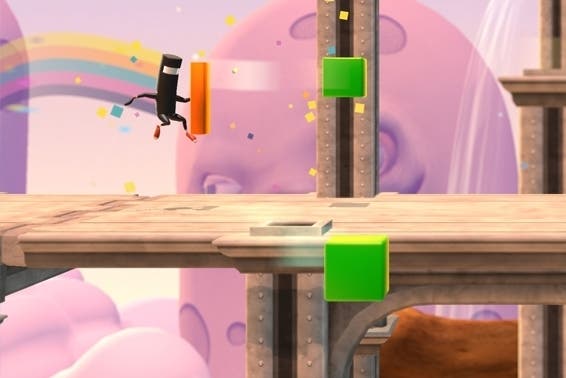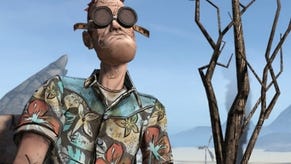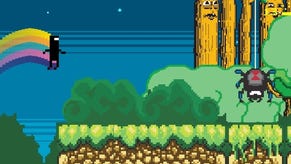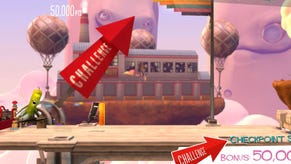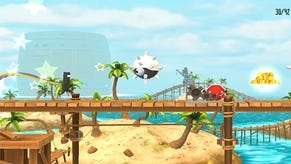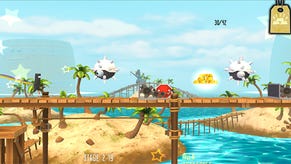Bit.Trip Presents... Runner2: Future Legend of Rhythm Alien review
Run, flat boy, run.
There's gold in them there clichés - at least for a game-maker with a talent for subversion and quirky embellishment. This belief has underpinned San Franciscan developer Gaijin Games' past titles, all of which have employed the prefix 'Bit.Trip' and all of which have adopted the fat pixel aesthetic of late 1970s Atari games. Partly responsible for the renaissance in vintage art styling in the independent game scene, Bit.Trip took pixels once viewed as crude and outmoded and made them stylish again, along with the sine-wail soundtracks that gave way to Hollywood orchestras in the 1990s (now an artistic choice rather than a technological constraint).
But Gaijin's talent isn't only for trendsetting. The developer's more laudable quality is in taking the medium's first principles (as laid down by Pong, Pac-Man and others) and spinning them into fresh, vivid shapes. Time and again the company has found gold in these clichés. That keen interest in tired or outmoded game styles continues with Runner2: Future Legend of Rhythm Alien, a game that slots into the so-called auto-runner genre, which is now - quite understandably - a bit weary. As in Canabalt, Jetpack Joyride et al, your character automatically runs from the left of the screen to the right, and you must dodge various obstacles in order to progress as far as possible.
Future Legend of Rhythm Alien tweaks the formula in some consequence-rich ways. For one, each level has a start, a middle and an end and, if you crash into a ledge or fail to leap clear over the head of a spike-helmed Goomba, you are simply returned to the start of the stage to seamlessly try again: there is no death in this game. Protagonist CommanderVideo's red sneakers never wear out and no matter how many times you throw him from a ledge into oblivion he'll make another attempt without complaint or penalty, and with all the tenacity of one of Trials' bike-riders.
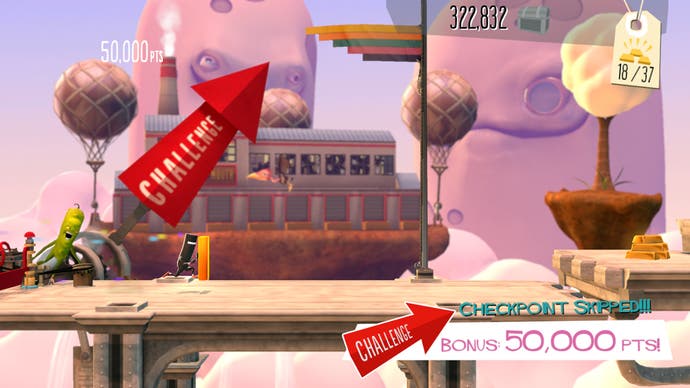
For this reason your score for each of the 100-odd stages is derived not from time taken to completion but from the number of items you collect along the way. A stream of gold bars and red score-boost power-ups litter your path, requiring different timed jumps, slides and loop-de-loops for collection. Make it to the end of the stage having collected every available token and you'll have the opportunity to fire your character from a cannon into a bullseye for some bonus score - essential for ascending to the higher end of the leaderboard.
While none of Gaijin's creations look like music games in the traditional sense, they all place a firm emphasis on musicality, and Future Legend of Rhythm Alien is no different. The level acts as a kind of musical stave that CommanderVideo runs along, and the different obstacles act as 'notes' that are avoided or collected in time with the music. These hurdles require different button inputs (press down to slide through a tight gap, press X to smash through a wall, sweep the analogue stick around to run around a giant loop and so on) and each pick-up you collect has its own sound effect, the sample bedding in with the music, often producing the melody of the song.
Watch your hands as you play and you'll see the basic interactions are pure Guitar Hero: you tap the relevant coloured button in time with the music. But the on-screen output of these interactions is that a lanky character leaps and bounds through a landscape. In this way Gaijin meshes the rhythm action game and the auto-runner to create an experience that feels at once novel and familiar.
The music game aspect of Future Legend of Rhythm Alien is clarified by the way that, when you make a mistake, the game sends you back to the beginning (or the midway checkpoint) without missing a beat - as if an invisible game designer-cum-music teacher is sternly tapping the sheet music, saying: "once again from the top". The jolt of annoyance you feel at these rude restarts dissipates as you begin to learn the level like a musician would learn a piece of music (and although it's a fair game, it's also rich in frustration).

Future Legend of Rhythm Alien looks entirely different from the other games in the Bit.Trip saga. Gone are the Colecovision graphics; for the first time, Gaijin moves into fully 3D character models and backgrounds. It's stylish. A silhouetted drop-down blind transitions menu screens while a commentator (Charles Martinet, the voice of Mario, no less) offers a 'previously on...' update at each load-up. This is a bright, rangy game, one that bears very little specific likeness with its forebears, but which maintains their feel. Gaijin reveals a welcome graphical range - turns out all that 8-bitness was through choice rather than necessity.
That said, Gaijin hasn't fully abandoned its nostalgia. In addition to the basic collectibles, many stages contain bonus keys, chests and even Famicom cartridges which will warp CommanderVideo into a series of 8-bit renderings of the game. The five worlds and their attendant stages are accessed via a Super Mario World-style map and new characters are also unlocked along the way, humorous creations that add to the restrained absurdity of the game's look.
But its true treasure is to be found in the marriage of rhythm and platforming - an inventive concoction shrouded in the guise of a plain auto-runner. Future Legend of Rhythm Alien may be a pre-emptively boastful title, but in its quiet, unassuming way, Gaijin Games has once again struck gold.
